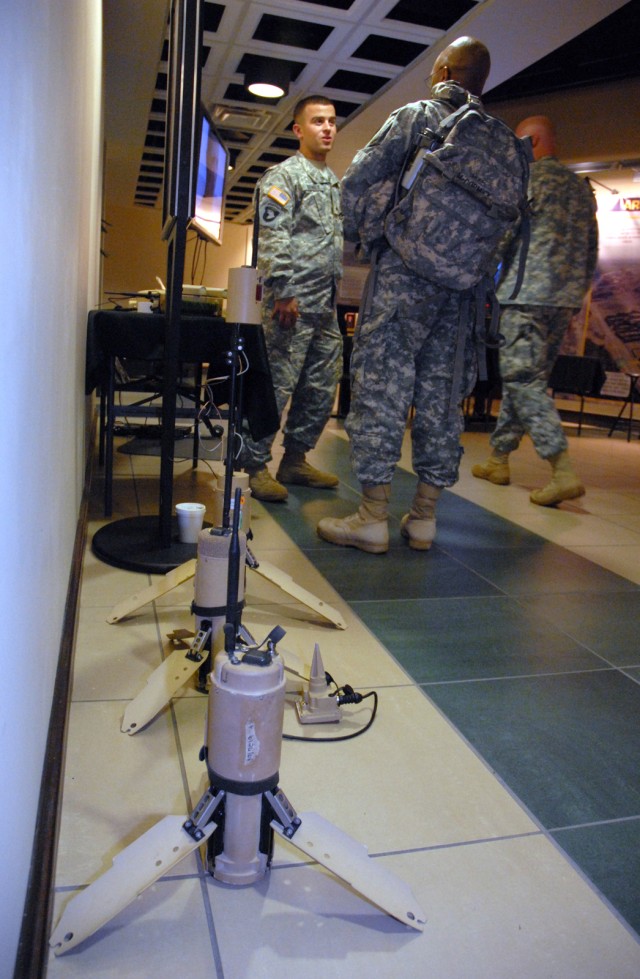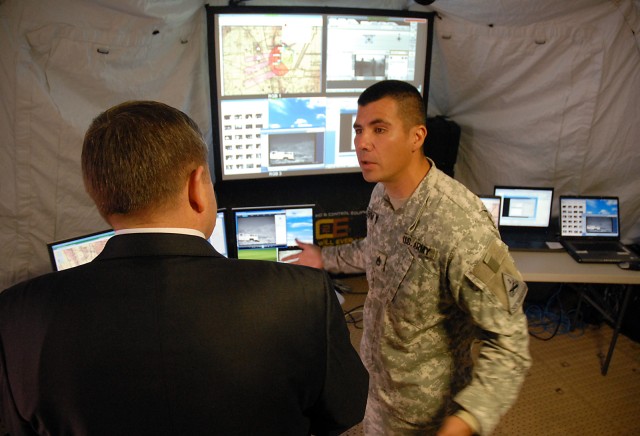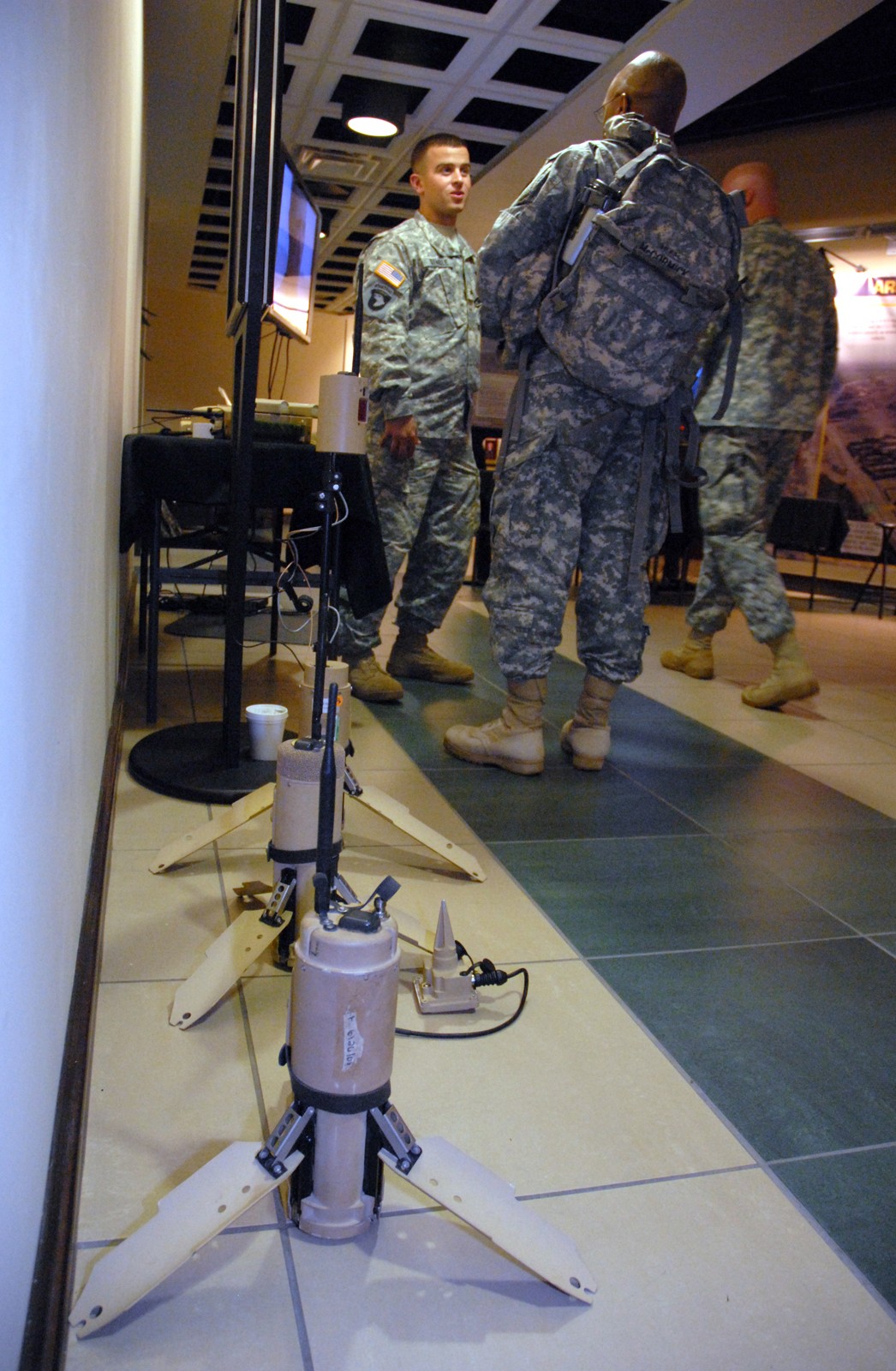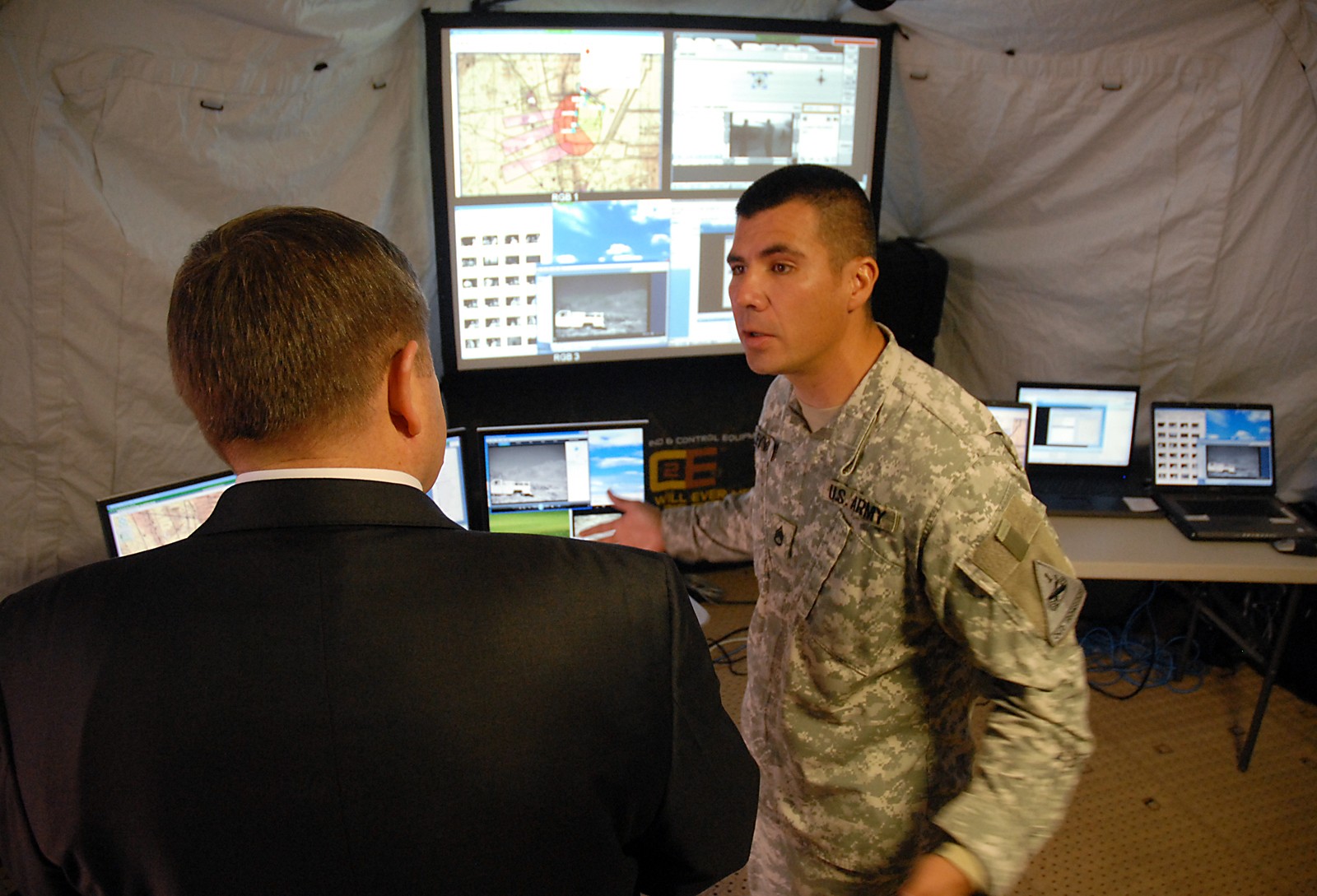FORT LEAVENWORTH, Kan. (Nov. 5, 2009) - Soldiers and civilians of the newly established Program Executive Office Integration displayed new equipment and provided a preview of emerging technology Oct. 28-29 at the Lewis and Clark Center.
The robots, remotely piloted vehicles, sensor arrays, and other air and ground-based equipment on display are, or will be, capable of capturing photos and video, infrared imagery, and detecting vibrations from movement of vehicles or personnel.
Maj. Eddie Strimel, Common Controller assistant project manager, is working to develop a single "universal remote" to control all of the different platforms. He said the purpose of the Common Controller and the other PEO Integration systems is to provide Soldiers access to a secure network and situational awareness to the lowest level in near real time. Strimel said the systems on display would all work together to present a common operating picture and help coordinate operations.
Strimel said Soldier field testing and feedback are an important to the development of the Common Controller and other equipment. He said his team is working to reconfigure the controller display and reduce the total weight of the unit - the remote and all of its necessary batteries, cables and boxes currently weighs in at 25 pounds, but will be reduced to 15 pounds by next summer, Strimel said.
"As technology matures, we'll insert that technology," he said.
Strimel said the Common Controller would reduce the logistical footprint for a brigade combat team, and reduce required training time for Soldiers.
Maj. Brandon Glover is a Signal Corps officer and student in Intermediate Level Education class 2010-01. He said he was impressed with the humvee-mounted Network Integration Kit and its capabilities as a situational awareness tool.
"Seeing new equipment and technology come out is amazing," Glover said.
The Network Integration Kit is the traveling "cell phone tower" that provides a secure network for all of the systems.
Also on display was the XM501 Non-Line of Sight Launch System. Staff Sgt. Joshua Dexter, a fire support specialist with Training and Doctrine Command Capability Manager Rockets and Missiles at Fort Sill, Okla., said the NLOS-LS would add a precision-fires capability to an infantry brigade combat team.
He said each IBCT would receive a platoon of six pods, with 15 missiles per pod. Each precision-guided missile has a 12-pound shaped charge warhead, and can be guided on target by laser, infrared or Global Positioning System. Dexter said the missiles have a range of 40 kilometers, meaning one platoon could effectively cover an entire brigade area of operations, including urban areas.
NLOS-LS is currently being tested by the Army Evaluation Task Force at Fort Bliss, Texas, and is scheduled to be fielded in fiscal year 2012. Dexter said there is a possibility the system could be fielded sooner because of demand from Soldiers in the field.
"We've already received a lot of operational needs statements from Iraq and Afghanistan," Dexter said.






Social Sharing